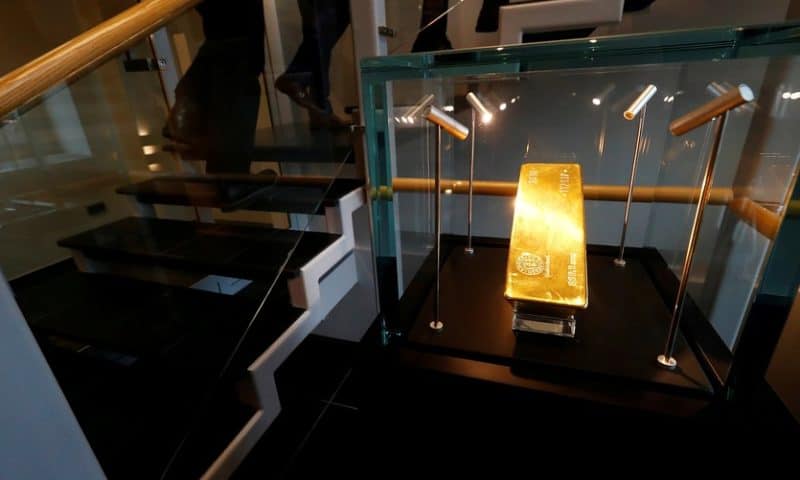Upbeat data on U.S. jobs and manufacturing weigh on prices Friday
Gold futures declined Friday, following a key reading of U.S. jobs that came in better than expected and data that revealed a monthly rebound in the ISM manufacturing index.
However, prices for the yellow metal still tallied a second weekly climb in a row after the Federal Reserve hinted at a pause in interest-rate hikes and amid ongoing support from various geopolitical issues, including uncertainty surrounding the U.S.-China trade dispute.
April gold GCJ9, -0.24% edged down by $3.10, or 0.2%, to settle at $1,322.10 an ounce. Tracking the most-active contracts, prices ended 1.9% higher for the week, according to FactSet data.
U.S. employment data reinforced a picture of a solid labor market, but one that isn’t likely to sway the Federal Reserve from its newfound “patient” policy stance, a development that handed gold a solid January gain.
The Labor Department said the U.S. created 304,000 new jobs in January, far beyond estimates, with economists polled by MarketWatch having expected a more subdued 172,000 jobs last month. The results come after a partial government shutdown, which ran a record 35 days, was seen as having no “discernible” effect on the results, according to the Department.
The unemployment rate edged up to 4% from 3.9%, while the average wage paid to American workers rose 3 cents, or 0.1%, to $27.56 an hour. The 12-month rate of hourly wage gains dipped to 3.2% from 3.3% in the prior three months.
“In a way, the jobs report doesn’t really change anything as far as the Fed is concerned because they were expecting the labor market to be strong,” Fawad Razaqzada, technical analyst, at Forex.com, told MarketWatch.
The Forex.com analyst said lackluster wage figures may actually reinforce the view by central bankers that patience is needed due to muted signs of inflation.
Separately, the Institute for Supply Management said its manufacturing index rebounded in January to 56.6% from 54.3% the prior month. The University of Michigan’s consumer sentiment index, however, dropped to 91.2 in January from 98.3 in December—the worst reading since Donald Trump was elected president.
Gold prices gained about 3% last month, tallying a fourth straight monthly gain, in large part as the Fed left interest-rates unchanged and as it employed language in its statement that it would be “patient,” hinting at a momentary pause in monetary tightening — a bullish development for bullion prices, as it depresses the dollar. Gold’s gains were limited in part because stock market bulls also rejoiced in the Fed’s shift.
“History overwhelmingly suggests the Fed will be easing policy within three to six months. Once this inflection in Fed policy officially hits the tape, gold should have already commenced what we expect to be a significant and sustained advance,” said Trey Reik, senior portfolio manager at Sprott Asset Management.
Meanwhile, President Trump on Thursday suggested another high-level meeting with Chinese President Xi Jinping was in the cards as trade negotiations between Washington and Beijing continued. Positive trade developments could cool some demand for haven gold and silver.
March silver SIH9, -1.01% fell 0.9% to $15.931 an ounce. For week, prices settled up 1.5%, while March copper HGH9, -0.48% fell 0.4% to $2.773 a pound, for a weekly rise of 1.6%. April platinum PLJ9, +0.11% added 0.2% to $826.70 an ounce, contributing to a weekly rise of 1%.
March palladium PAH9, +1.31% settled at $1,313.60 an ounce, up 1.1%—for a 0.5% loss on the week.
The gold-backed SPDR Gold Shares exchange-traded fund GLD, -0.20% was down 0.2% and the iShares Silver Trust SLV, -0.86% slipped 0.7%, but both traded more than 1% higher for the week.

